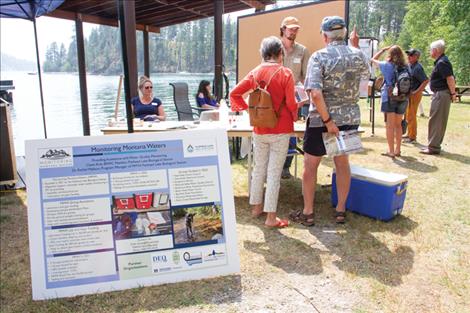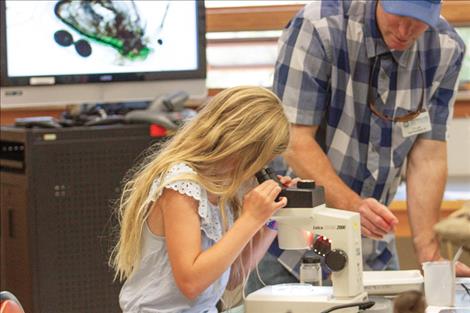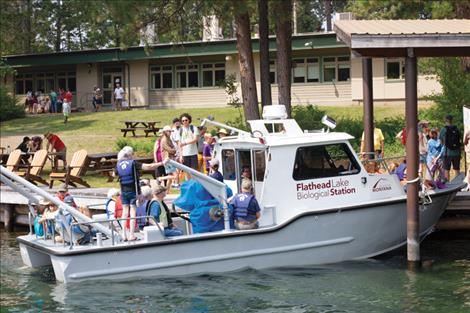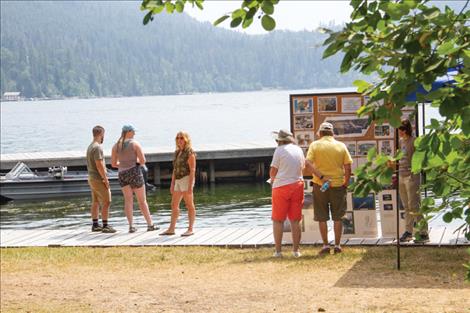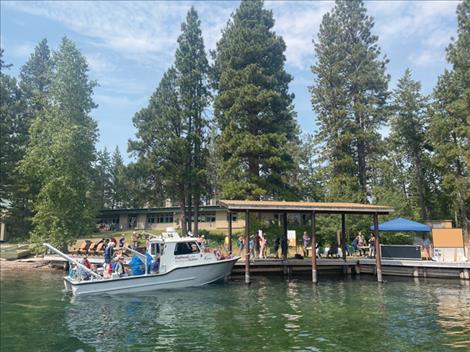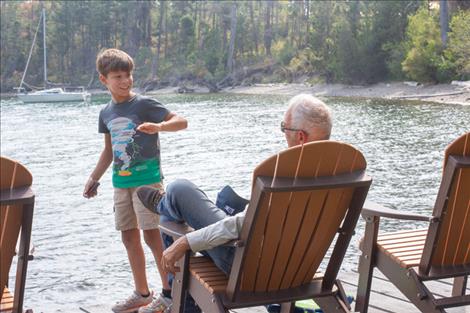Ecology, Discovery shared
State of lake addressed during annual FLBS open house
Hey savvy news reader! Thanks for choosing local.
You are now reading
1 of 3 free articles.
YELLOW BAY — The clarity of Flathead Lake’s water is the same in 2023 as it was in 1977. This fact, emphasized Flathead Lake Biological Station Director Jim Elser, is something to be proud of.
Elser, who also serves as Bierman Professor of Ecology for the University of Montana, spoke to visitors at the Aug. 4 open house about the overall state of lake.
At nearly three feet below full pool, the lake’s low water level was a primary topic of interest. In a slideshow presentation he shared with attendees, Elser pointed to mediocre snowpack, rapid spring runoff and severe drought as the combined causes for the low levels. An inaccurate prediction of diminishing drought conditions in Northwest Montana made by NOAA this spring (the area remains in severe drought) may have hampered foresight of the issue.
When asked what the natural level of the lake would be, prior to man-made dams and reservoirs, Elser answered that the lake would be nine feet lower than full pool (2,893 feet). He also noted that the low water level is unlikely to have an ecological impact in the main body of the lake. The lake’s current average depth is 162 feet (down a total of 2% from 165 feet).
A warming climate leads to decreased snowpack and less natural water being supplied to the lake. Accelerating a shift to renewable energy sources and decreasing the amount of carbon dioxide released in the atmosphere are ways in which people can “lower probability of low snow, low runoff, high evaporation and drought in the coming years.”
Infrastructure changes such as floating docks, wave attenuators, dock re-design, boat lift adjustments, boat ramp extensions and shifts in irrigation intakes could also be made.
Pivoting to some better news, Elser shared that the quality of water in Flathead Lake remains excellent. Concentrations of nitrogen and phosphorus (nutrients that stimulate algal growth and thus affect water transparency) have remained fairly constant in the lake over the last 40 years and may even be declining in river inputs due to watershed protection, a phosphate detergent ban and advanced wastewater treatment investment.
Looking to the future, Elser advised people should: remain diligent and alert, continue to invest in advanced wastewater treatment, maintain and modernize septic systems, consider modular wastewater treatment, protect wetlands and other critical habitat, get a handle on agricultural nitrogen and phosphorus use, tackle air pollution and climate change (forest fires).
In addition to Elser’s presentation, tours, interactive exhibits and hands-on activities for children rounded out open house activities.
Dan O’Hoyt, who lives south of Polson, attended the event with his grandson. “I was impressed with a lot of dedicated, hard-working people who are passionate about their craft,” he said. Prior to the open house, O’Hoyt said he hadn’t realized the lake had once been a giant chunk of ice. This fact coupled with the discovery that most of the wildlife that lives in the lake was introduced by man were the most interesting things he said he learned.
Founded in 1899, FLBS is one of the oldest active biological stations and will celebrate its 125th anniversary next year. Data from the research and monitoring work done at the station is shared during open house and other community education and outreach events. For more information about FLBS, visit: flbs.umt.edu.















